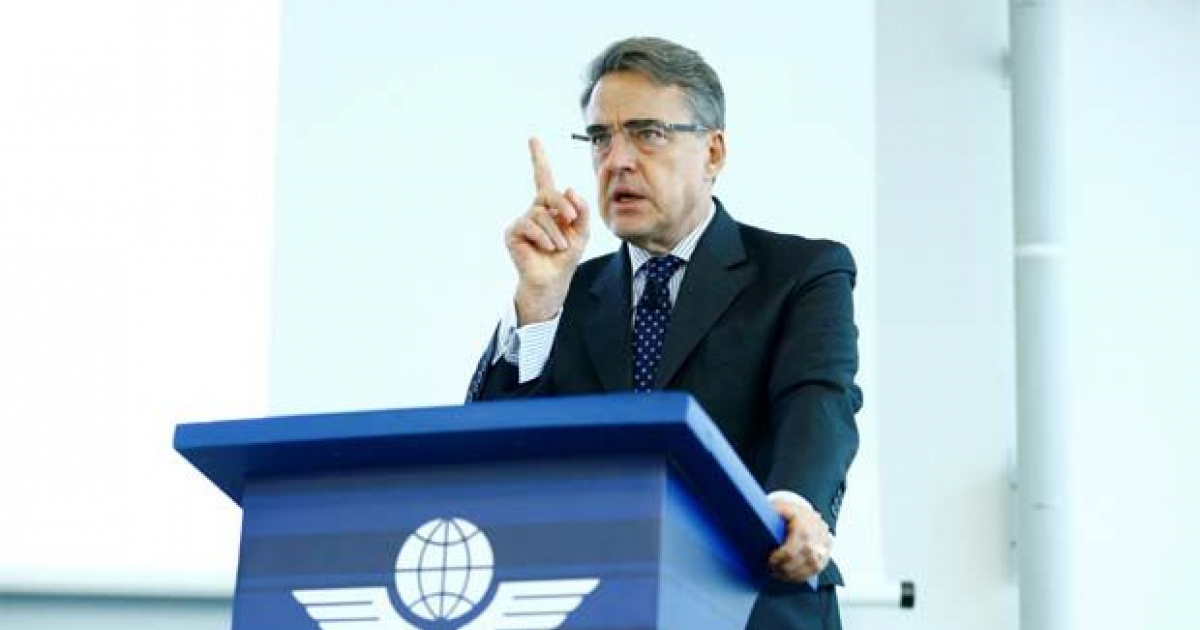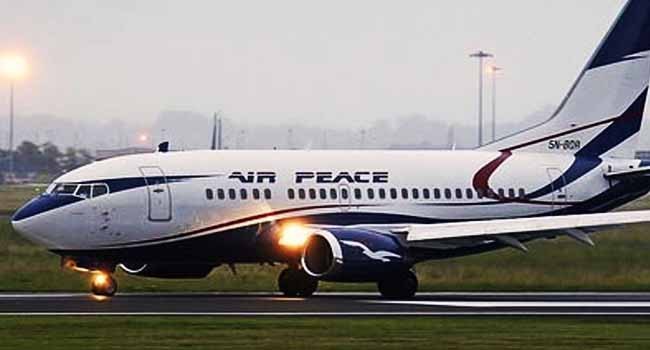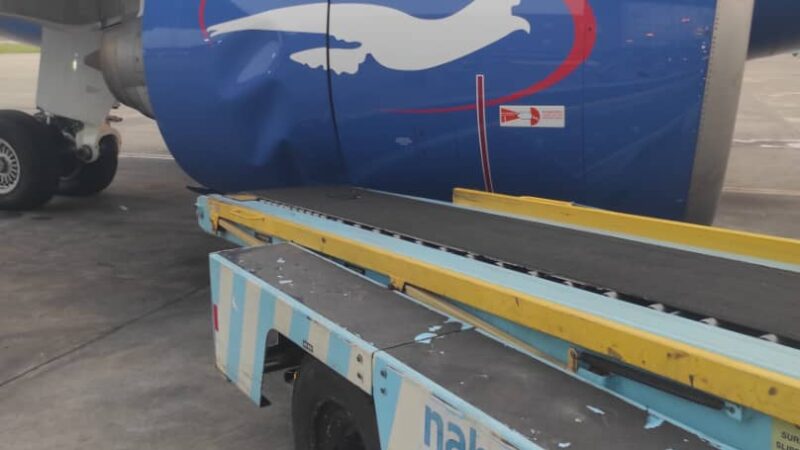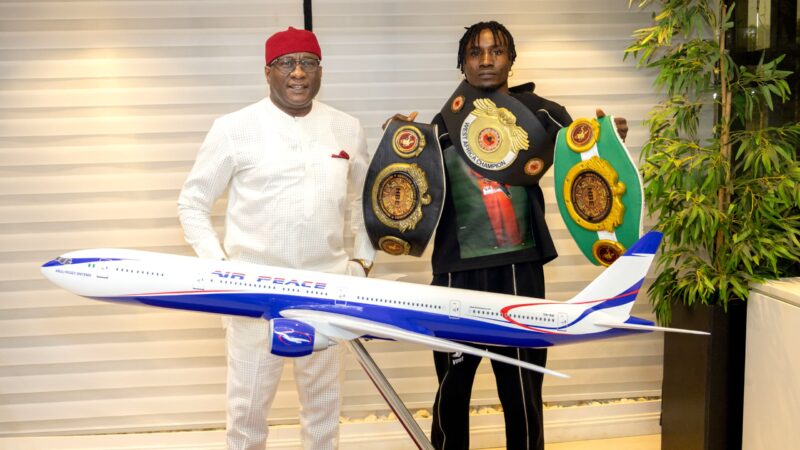IATA enjoins stakeholders to put safety of passengers first


The International Air Transport Association (IATA) has enjoined governments and industry stakeholders to synergize forces and intelligence through modern technology to put the safety of passengers first and to achieve greater efficiency from infrastructure.
IATA’s Chief Executive Officer, Alexandre de Juniac, made this call during his opening address at the Global Airport and Passenger Symposium (GAPS) held on Monday 14th October 2019 in Warsaw.
The transcript of De Juniac’s speech is below:
Good morning Ladies and Gentlemen, it’s a pleasure to be with you.
The Global Airport and Passenger Symposium is an important event on the IATA calendar. With a theme of Building Capacity for the Future, over the next few days, you will have plenty of critical items on your agenda.
Thanks to our friends at LOT Polish Airlines for their warm hospitality as hosts, and the many sponsors that have partnered with us to make this event possible.
Economic Trends
These are interesting times for the global air transport industry. We are under pressure from many directions.
In September alone, four airlines in Europe went bust. The distress this caused to the staff and passengers was clear. This shows how tough it is to run an airline—especially in Europe, where infrastructure costs and taxes are high.
Trade tensions are taking their toll on the cargo side of the business. We have not seen growth in 10 months. In fact, volumes are now tracking about 4% below last year.
Geopolitical forces have become even more unpredictable than usual—with real consequences to our business. The recent attack on Saudi oil infrastructure reminds us we are vulnerable to rapid swings in the oil price.
Andrew Matters, our Deputy Chief Economist will shed more light on these issues in his presentation. But I wanted to begin my speech with a brief reminder that we are in challenging times. And these provide important context to your discussions on building the future—transforming airports, making the most of digital capabilities and creating a seamless journey for the growing number of travelers.
The challenges are by no means limited to economic trends. The International Civil Aviation Organization (ICAO) Assembly ended earlier this month. And the top agenda item for the 193 member states was to build a sustainable future for aviation.
Aviation is serious about environmental sustainability. We have long recognized it as key to our license to grow and spread the benefits of global connectivity, benefits which are linked to 15 of the 17 UN Sustainable Development Goals.
And long before the climate marches of this year, our industry has been working to mitigate its impact on climate change. For over a decade, we have had a goal to cap net emissions from 2020. And by 2050 we want to cut our carbon footprint back to 2005 levels.
The ICAO Assembly reconfirmed its commitment to the Carbon Offsetting and Reduction Scheme for International Aviation (CORSIA) agreement, which will help us achieve carbon-neutral growth from 2020.
We are now working to map our way to the more ambitious 2050 goal. And an important outcome from the Assembly is that ICAO will now start looking at a long-term aspirational goal to cut emissions—so governments and industry will be aligned.
Progress has already been made. Emissions from the average journey are half what they were in 1990. The progress that we are making on sustainable aviation fuels probably holds the key to our biggest emissions-reducing opportunity. Over their lifecycle, they have the potential to cut aviation’s carbon footprint by up to 80%.
We need to match these critical efforts with effective communications. People are concerned about climate change—rightly so. And they need to know what our industry is doing. So, we will be intensifying our communication efforts so that we can engage in an even more meaningful dialogue with travelers, stakeholders, and governments.
The Agenda
Our industry will continue to face both economic and environmental challenges. And we will overcome them because we have an important purpose—bringing people and businesses together. I have long called aviation the business of freedom because it liberates people to do things that would otherwise be impossible.
More and more people, particularly in the developing world, want to participate in the benefits of aviation. Our industry is growing to meet these demands.
This brings its own set of challenges. Building capacity for the future – the theme of this conference – will require transformation at the airport, airline and industry levels. It means:
Putting the passenger at the heart of our decision-making process – we need to understand our customers well enough to meet or exceed their expectations
Developing infrastructure that can cope with future demand – without relying on ever-bigger airports, and
Creating a workforce equipped with the necessary skills for the future
Passenger First Approach
Let’s begin with the passenger—our customers. What do they want in their travel experience? The 2019 Global Passenger Survey gives us some clues. The results will be presented later today. But the key finding is that passengers want technology to improve their travel experience. In particular, passengers want to use biometric identification to speed up travel processes. And they want to be able to track their baggage.
The survey found that 70% of passengers are willing to share additional personal information including their biometric details to speed up processes at the airport. This rises in correlation with the number of flights taken per year.
Biometric technology has the power to transform the passenger experience. Today, the journey through the airport is often frustrating. You need to go through repetitive steps, such as presenting your travel documents at numerous points to verify your identity. This is time-consuming, inefficient and not sustainable in the long-term as traffic grows.
IATA’s One ID initiative is helping transition us towards a day when passengers can enjoy a paperless airport experience and move from the curb to gate using a single biometric travel token such as a face, fingerprint or iris scan.
Airlines are strongly behind the initiative. Our members unanimously approved a resolution to accelerate the global implementation of One ID at our AGM in June. The priority now is ensuring there is regulation in place to support the vision of a paperless travel experience that will also ensure that their data is well protected.
Baggage
A ‘passenger-first’ approach also means taking care of their possessions when they travel. Passengers tell us that the ability to track their checked luggage is a priority. Over 50% said that they would be more likely to check their bags if they were able to track it throughout the journey. And 46% said that they want to be able to track their bag and have it delivered directly off-airport to their final destination.
Airlines and airports are facilitating this by implementing tracking at major journey points such as loading and unloading (IATA Resolution 753). IATA airlines unanimously resolved to support the global deployment of Radio Frequency Identification (RFID) for baggage tracking in order to meet passenger expectations.
So far implementation has seen some good progress, especially in China where the technology has been thoroughly embraced. In Europe, several airlines and airports are successfully working together to introduce RFID, notably Air France at Paris CDG.
I take this opportunity to remind our members that in addition to meeting our customers’ expectations, implementation of RFID will help reduce the USD2.4 billion cost to airlines from mishandled bags.
And the benefits don’t stop there. Tracking bags will also reduce fraud, enable proactive reporting, speed up aircraft readiness for departure and facilitate the automation of baggage processes.
Infrastructure
The second pillar of sustainable growth is developing an infrastructure that can cope with future demand. We will not be able to handle growth or evolving customer expectations with our current processes, facilities and ways of doing business. Accommodating growth by building bigger and bigger airports will be challenging from a public policy perspective.
To address the challenges of future airports, we have partnered with Airports Council International (ACI) to create the NEXTT initiative. Together we are exploring important changes in technology and processes to improve the efficiency of what our customers experience when traveling.
This includes examining options for increased off-site processing; which could reduce or even eliminate queues. We are also looking at using artificial intelligence and robotics to more efficiently use space and resources. A further crucial element is improving data sharing among stakeholders.
There are eleven individual projects currently underway under the NEXTT umbrella. You will have a chance to learn about them later today. I also encourage you to experience the ‘airport journey of the future’ in virtual reality at the NEXTT booth in the exhibition area.
We look forward to seeing Poland take a leadership role in delivering the NEXTT vision with the construction of Warsaw’s new airport– Solidarity Transport Hub. It’s Europe’s first greenfield airport in over a decade. It is a major opportunity to focus on using the latest industry technology standards to deliver:
Seamless, secure, efficient and highly personalized passenger journeys
Baggage tracking
Smarter and faster movement of cargo
Efficient aircraft turnarounds powered by automation and data-exchange among stakeholders.
We have already established a stakeholder group to liaise with the project leaders and the government to make this a success and ensure robust cost discipline.
Capacity for the Future
We must remember that global air connectivity is delivered to people by people. We need a diverse workforce that has the training and skills for an increasingly digital and data-driven world.
Right now, it is no secret that the gender balance at senior levels in aviation is not what it should be. We will not have the capacity needed for the future if we don’t fully engage the potential of women in the workforce at all levels.
A few weeks ago, IATA launched the 25by2025 Campaign to address the industry’s gender imbalance. It is a voluntary program for airlines to commit to increasing female participation at senior levels to at least 25% or by 25% by 2025.
The choice of target helps airlines at any point on the diversity journey participate meaningfully. And we should keep in mind that the ultimate goal is to bring us to a 50-50 representation.
IATA is also a participant. One commitment that we are making is for a more diverse speaker lineup at our conferences. This year’s GAPS agenda has 25% female participation. We will do better next year and the year after and the year after that!
Conclusion
All of us are here today because we believe in the good that aviation does. As I said before, flying is freedom. The society we live in is better and richer for what our industry makes possible.
To protect that freedom for future generations we must commit to making flying unquestionably sustainable – environmentally, economically and socially.
We must effectively manage our climate change impact
We must ensure passengers are at the heart of our decision-making process
We must build an effective and efficient infrastructure that can cope with future demand
We must create a gender-balanced workforce equipped with skills for the future
These are no small tasks. But we are used to challenges. And when aviation unites in a common cause we have always delivered outstanding solutions.
Thank you.







